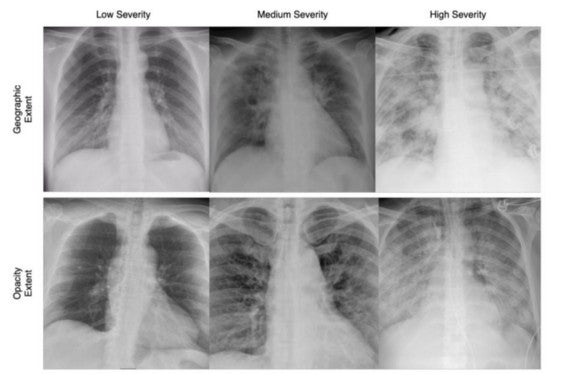Waterloo Engineering researchers behind an open-source project to detect COVID-19 using chest X-rays and artificial intelligence (AI) announced a significant advancement this week.
In addition to detecting the disease, researchers said their technology is now capable of determining its severity.

Researchers are using AI and chest X-rays to determine COVID-19 severity.
The project, dubbed COVID-Net, was launched in March by researchers at the Vision and Image Processing (VIP) Lab and DarwinAI, a Waterloo startup company co-founded by Alexander Wong, a professor of systems design engineering.
Sheldon Fernandez, a Waterloo Engineering alumnus and CEO of DarwinAI, said in a blog post that the advancement was made using over 10,000 chest X-rays - including hundreds from patients with COVID-19 - in collaboration with doctors at Stony Brook Medicine in New York.
New open-source AI models called COVIDNet-S help doctors triage and prioritize patients for treatment based on the severity of their conditions.
“We have high hopes that COVIDNet-S will be a useful tool in supporting front-line workers throughout the world,” Fernandez wrote in his post.